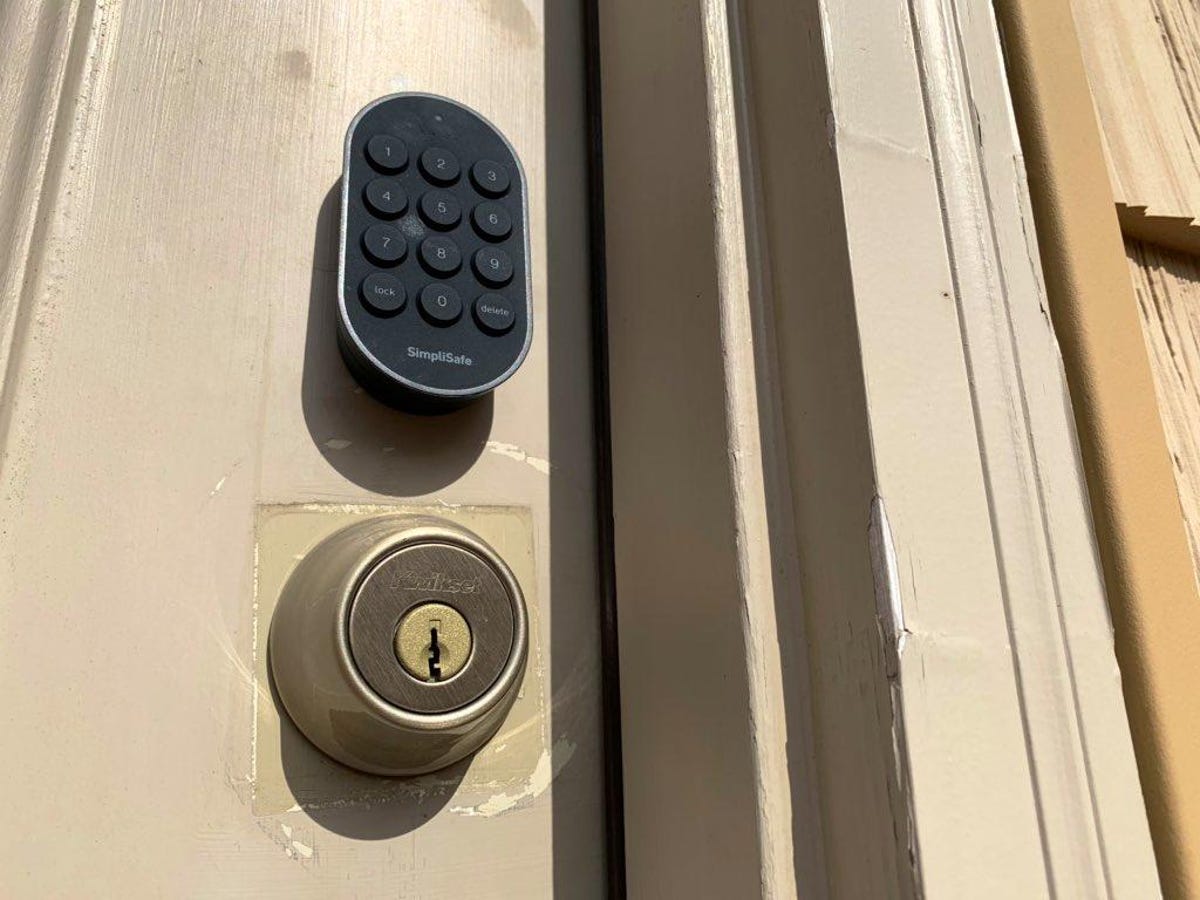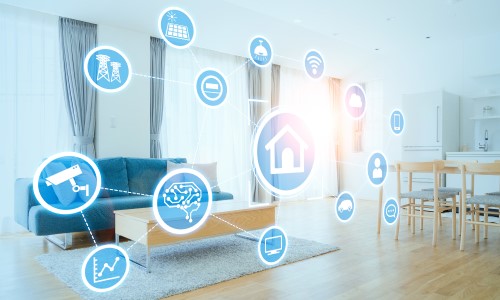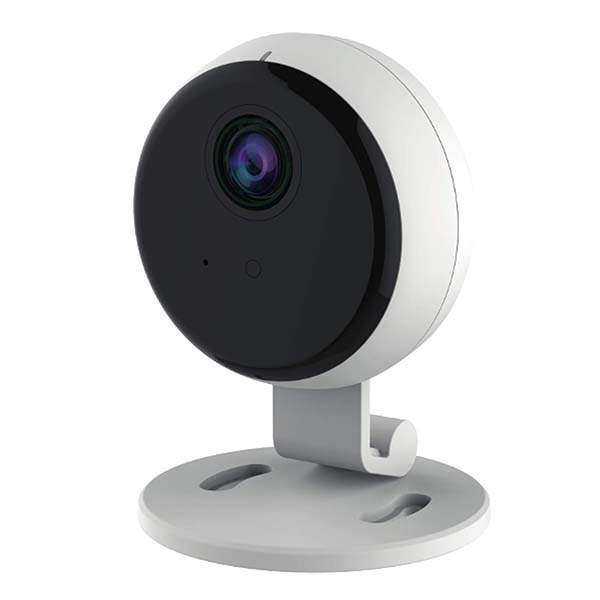
Scout security is an independent home alarm company that launched in 2013 with a crowdfunding campaign that exceeded its fundraising goal within 30 days. It has quickly become one of the most popular DIY security systems available.
Its equipment is easily installed, affordable, and can even be controlled by a smartphone, computer, or tablet. It offers a range of equipment bundles, which include professional monitoring.
The system consists of a hub (controller), a door panel, and sensors for access that are all connected with an app on a phone or tablet. It also includes an indoor camera and a smart door lock.
The majority of items are mounted using adhesive strips that do not require any additional tools. The only items that require more hardware and tools are the smart door lock, video doorbell, and indoor security camera.

There are many alarm options, from "Home", to "Away", even "Kids Playing". Controls are modeled after IFTTT. (Though they do not use that platform) This allows you to create custom triggers which allow you to send emails or text messages when certain events occur.
Alexa allows you to arm and disarm your system using voice commands. For each command you'll have to speak a code. This isn’t a problem, since it adds security to disarming, as someone can’t accidentally turn off your alarm by pulling on the cord.
It's also worth noting that Scout has a cellular backup and can automatically set off the alarm when it loses Internet connectivity. This keeps your system safe by preventing it from crashing.
The app allows you to control the system via your smartphone or tablet. You can set up your sensors to suit your needs, monitor live feeds via your indoor camera or grant access.
Scout's customer support is excellent, with customer service representatives available from 9 am to 6 pm CST seven days a week. There is email and phone support available, along with a knowledgebase and a forum.

Scout allows you to return any product for a full refund or a replacement. The company ships you a replacement free of charge and provides a return label.
The company offers a 60 day money back guarantee for all equipment and hardware, as long the item remains in its original package and is not defective. They offer a warranty of three years on all their devices.
Customers who choose the professional monitoring option can have peace of mind knowing that they'll be contacted by a dedicated contact in the event of an emergency. This feature is great for those with pets or young children who may not be home.
Scout can unlock your door remotely, check on the status of the security system and get a list with the last known visitors via the doorbell cam. The app lets you grant access to the home from your smartphone. It allows you to monitor who is inside your home without ever having to leave your couch.
FAQ
What is the distinction between surveillance cameras and security cameras?
Surveillance cameras may be used to monitor, but security cameras can also be used to protect.
Both types have their strengths and weaknesses. The only thing that distinguishes them is the type and quality of images they produce. Surveillance cameras record video at slow speed, so you can see what's going on in real-time. However, security cameras record only video and still photos, which can then be reviewed later.
Do I really want a home alarm?
Home security is essential for everyone who lives in a home. A burglar could break into your houseat any time without warning. They can steal anything, including valuable jewelry and expensive electronics. They could even walk off with all your possessions if you don't lock your doors.
Home security systems help you protect your home and notify you when something is happening. This includes monitoring motion, sending you alerts to mobile devices, recording activity, as well as allowing access to recorded footage.
A simple DIY camera can be used if you don't want to spend money on a security system. These cameras allow you to see who is at your front door and notify you when they are entering or leaving. But they won't help you stop intruders from breaking into your home.
Which home security system offers the most features?
The Ring Video Doorbell Pro has the most features out of all thehome security systems we reviewed. You can view who is at your doors, talk to them over your phone and record video. It also comes with free cloud storage so that you can store any recordings.
How do you choose between different home security systems types?
It is important to consider the threat level in your locality. For example, if there's a lot of crime in your neighborhood, then you might want an alarm that will sound when someone enters your property. In rural areas where there are fewer burglaries, you might not need as much security.
Consider whether you are prepared to pay more for advanced features. Some systems include cameras built in, while others do not. Some systems let you remotely monitor your house, while others require you being physically present to view the footage.
What should I pay for alarm monitoring
Alarm monitoring prices can vary depending upon how often it is to be monitored, what type of equipment you need, as well as whether you are looking at an annual or one-time fee.
Statistics
- That's probably why Cove has a whopping 98%* customer retention rate. (safewise.com)
- Unlike other online safety services that charge up to 100 percent of your monthly fee, Cove charges no upfront fees and has no hidden costs.
- Related questionsHome security systems that are 100% DIY (safewise.com)
- Depending on your insurance, 24/7 professional monitoring may qualify you for as much as 15% off your premium. (safewise.com)
External Links
How To
How to test a home alarm system
How to test a Home Security System
Installing your alarm monitoring software on your computer is the first step. Download the most recent version from the manufacturer's site. The next thing you want to do is to set up your phone number so that when someone calls the monitoring center they get routed directly to your line. If you don’t know how to do that, you can ask your local service provider. You are now ready to test your setup!
There are two main methods to test your system. The first way is to use a dummy device. This is basically a fake device that looks like a real one. Although it has all the same features of the real thing, it doesn't actually function. When you turn it on, it sounds just like the real thing would if it was working properly. There are downsides to using a dummy gadget. It won't give you any information about your system's actual functionality. Second, it might look suspicious to people who see it sitting around. It might also be stolen.
The second method is to test your system manually. This means that you go through every feature of your system and make sure that it works properly. You would check, for example, whether the motion sensors are working, the cameras are recording properly, and if the door locks work. Every item should be checked at least once every week. Once everything has been thoroughly tested, you can feel confident your system is functioning well.